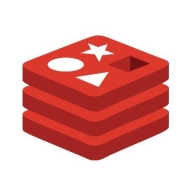

Neo4j Graph Database and Redis compete in the database technology market. Neo4j has the upper hand in managing complex data relationships through its graph structures, while Redis leads in rapid data retrieval owing to its speed and simplicity.
Features: Neo4j offers native graph storage, the Cypher query language, and advanced data relationship management, allowing users to gain deep insights into complex datasets. Redis provides robust key-value storage, in-memory caching, and support for various data structures, ensuring excellent performance and scalability.
Room for Improvement: Neo4j can enhance its performance in handling real-time data and improve integration features for non-graph databases. The complexity of the Cypher language might require simplification for new users. Redis can work on improving complex query handling, expanding support for advanced analytics, and optimizing memory efficiency for extremely large datasets.
Ease of Deployment and Customer Service: Neo4j's deployment is straightforward with extensive support and documentation for both self-hosting and cloud options, making it suitable for complex projects. Redis offers flexible deployment options, including on-premises and cloud services, with noted efficient customer service and quick response times.
Pricing and ROI: Neo4j's pricing reflects its extensive features, delivering significant ROI for complex analytical and relationship-based applications. Its cost is justified by its advanced capabilities. Redis provides a straightforward pricing model that offers substantial ROI through its high-speed data processing and low system requirements, making it suitable for applications prioritizing performance efficiency.

Neo4j is the graph database solution allowing the analysis of complex relationships and patterns in data, leading to better decision-making and improved business processes. The graph database offers easy data integration from multiple sources, providing a more comprehensive view.
The most valuable aspect of a graph database is its performance and response time, as it does not use the join function and only has nodes and raw data. Overall, Neo4j, as a global first-ranking solution, has helped organizations become more efficient and effective in data analysis and decision-making processes.
Redis is a high-performance, scalable, and easy-to-use caching solution that improves application performance. It is also used for session management, real-time analytics, and as a message broker.
Redis's valuable features include its ability to handle large amounts of data quickly, its simplicity and straightforward setup process, and its support for various data structures, providing flexibility for different use cases.
We monitor all NoSQL Databases reviews to prevent fraudulent reviews and keep review quality high. We do not post reviews by company employees or direct competitors. We validate each review for authenticity via cross-reference with LinkedIn, and personal follow-up with the reviewer when necessary.